Where's the Best Place to Plant Garlic? (Look for This)
Garlic, a staple in cuisines worldwide, thrives best when planted in a specific environment. Key factors to consider are well-drained, fertile soil, and adequate sunlight. In this article, we'll discover the ideal location for planting garlic, which can significantly enhance its growth and flavor.
The best place to plant garlic is in a sunny location with well-drained soil that's rich in organic matter. Garlic thrives in a pH range of 6.0 to 7.0. Raised beds or sandy loams are ideal for ensuring good drainage and preventing root rot.
Apart from the sun and soil, there's another key factor in growing fantastic garlic: spacing. Want to know the magic number for perfect spacing? Let's uncover this little-known gardening secret together!
Summary
- Garlic grows best in areas with cool climates and mild winters, with an ideal temperature range of 60–70°F.
- Planting garlic in the fall allows it to establish roots before winter. Those in warmer climates should plant in early spring when soil temperatures have dropped.
- Garlic requires full sun - at least 6–8 hours per day, with morning sunlight being particularly beneficial as it helps dry moisture on the leaves, reducing disease risk.
- Space garlic cloves 4–6 inches apart with rows 12–18 inches apart, as this provides adequate air circulation and allows plants to grow without competing for nutrients.
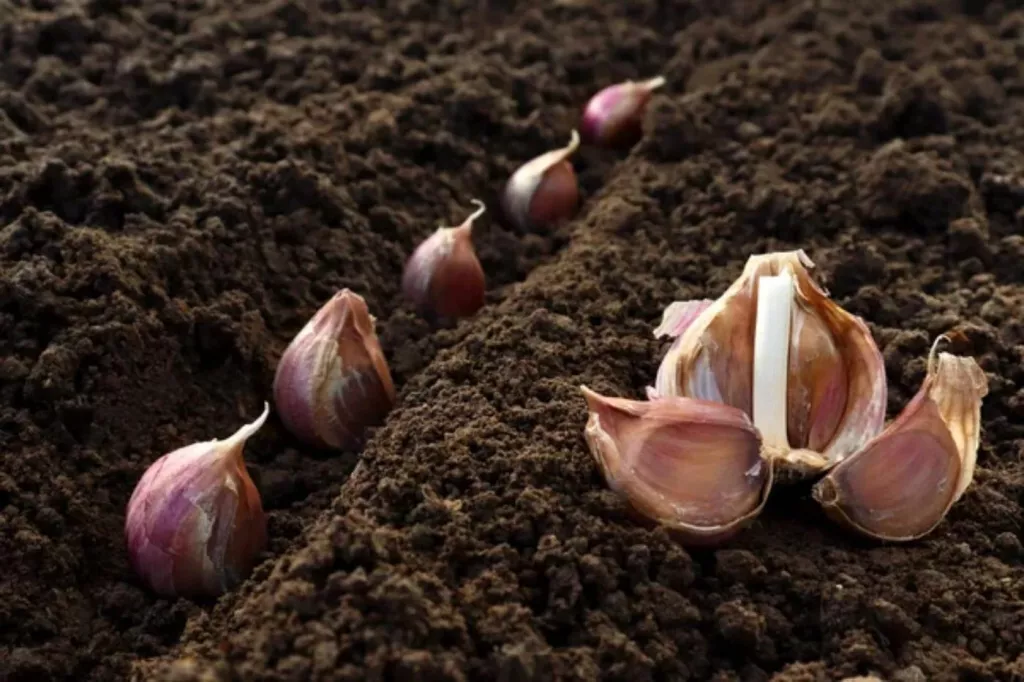
On this page:
Best Place to Plant Garlic
The table below summarizes the key factors to keep in mind when deciding on the best place to plant garlic in your garden:
| Consideration | Details |
|---|---|
| Climate | Garlic grows best in cool climates with mild winters. The optimal temperature range is 60-70°F. |
| Sunlight | Garlic needs full sun, at least 6-8 hours per day. |
| Soil | Garlic thrives in loose, fertile, well-drained soil with lots of organic matter. |
| Drainage | Good drainage is critical to prevent rotting. Raised beds can improve drainage. |
| Spacing | Space garlic cloves 4-6 inches apart with rows 12-18 inches apart. |
Best climate conditions for garlic planting
Garlic thrives best in areas where there's a cold winter and a warm spring. In cooler climates, plant garlic in the fall; it requires a cold period, as a continental cash crop, to initiate clove formation and benefit from winter's chill.
However, if you're in a warm climate, choosing the right garlic variety for your area and planting in the cooler months is key. You can check out this article for the most profitable garlic variety to plant.
In regions with cold winters, garlic should be planted several weeks before the ground freezes. This allows the plants to establish roots while temperatures are still between 32° to 50°F.
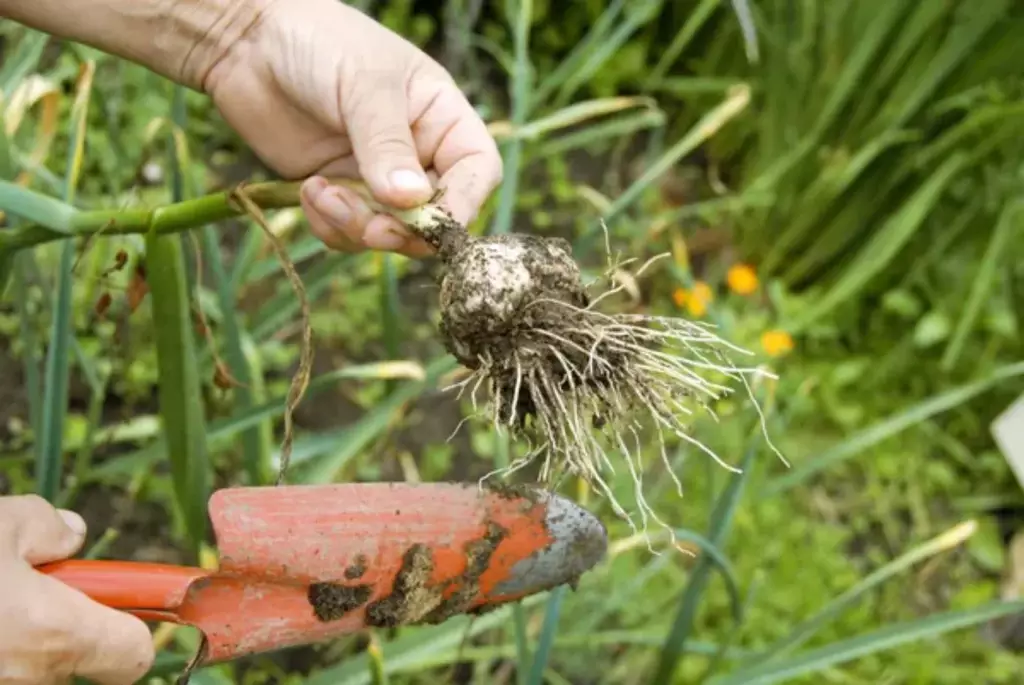
For those in warmer climates, where cool periods are less pronounced, timing is everything. You'll want to plant when the soil temperature has dropped, which might be in early spring rather than fall.
Best soil for growing garlic
Your garlic will thrive in well-drained soil. A loamy or sandy loam soil type, rich in organic matter, provides the optimal environment for garlic bulbs to develop.
The soil should not be compacted and should allow roots to grow freely and water to drain effectively.
Specific soil pH and nutrients
The ideal soil pH for garlic is between 6.0 and 7.0, slightly acidic to neutral. You can test your soil's pH using a home testing kit. If needed, adjust the pH by adding lime to increase or sulfur to decrease. Preparing the soil to be just in the right conditions can make garlic farming all the more profitable.
Garlic benefits from soil that's rich in nitrogen, so perhaps consider incorporating a slow-release fertilizer as part of your preparation.
How to condition soil for garlic planting
Condition your soil by adding compost and other forms of organic matter. This will improve soil structure, nutrient content, and drainage.
Before planting, you can also add a layer of mulch to help with weed suppression and moisture retention. Remember, a well-prepared bed is the key to strong garlic growth.
Sunlight and water needs of garlic
For thriving garlic plants, proper sunlight and a consistent watering schedule are crucial. Your garlic will need full sun and regular moisture without becoming waterlogged.
Garlic demands plenty of light. Try to make sure to plant your garlic in a location that receives at least 6 hours of full sun daily. This sunlight is essential for the development of strong and healthy bulbs.
In Australia, garlic tends to be one of the most profitable small farm crops, needing at least six to eight hours of full sun per day.
Watering schedule
Water your garlic once a week, providing enough water to moisten the soil to a depth of about an inch. If there's rain, adjust accordingly to avoid overwatering, and make sure your soil drains well to prevent the bulbs from becoming too moist.
Best sunlight for garlic
Garlic not only requires full sun but also well-timed exposure. Morning light is particularly beneficial as it helps dry the dew on the leaves, reducing the risk of fungal diseases. Your plants will be more robust with consistent sunlight exposure.
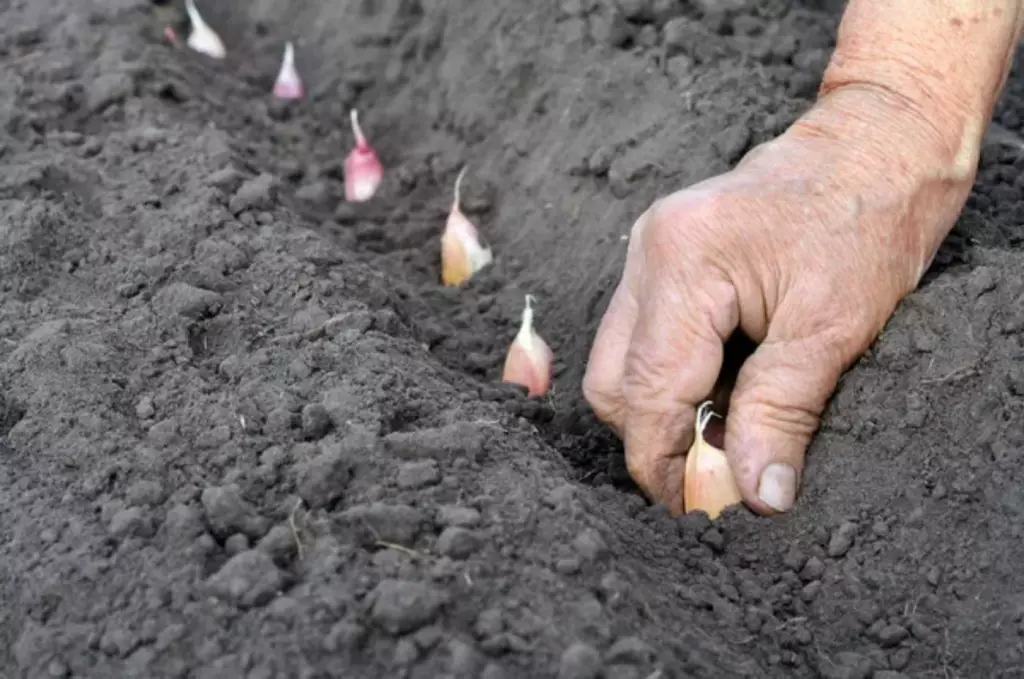
Land and spacing requirement for growing garlic
When planting garlic, the success of your crop hinges on two factors: the land where you plant and the spacing you give each clove. Proper attention to these details ensures healthy growth and sizeable bulbs.
Row spacing when planting garlic
To give your garlic the best chance at success, you should provide ample room between each row. Aim for rows to be about 18 inches apart.
This spacing allows for adequate air circulation, which helps in preventing fungal diseases, and makes it easier for you to navigate when it's time for weeding or harvesting.
Optimal spacing between each garlic plant
Each garlic clove should be planted about 6 to 8 inches apart within the row. Planting cloves too close can result in smaller bulbs, as each plant competes for nutrients.
Conversely, too much space can lead to weed issues. Careful spacing is a balancing act but is key for yielding large, healthy garlic bulbs.
Considering customer accessibility
When planning your garlic garden, try to consider how easy it will be for you to access it. Easy access is crucial for maintaining and harvesting your garlic.
You'll want to plant garlic in a location where you can comfortably reach each plant without stepping on the soil around it, which could compact it and harm the roots.
- Pathways: Ensure pathways are wide enough for you to move through comfortably.
- Planting rows: Keep rows at a reachable width, no more than 4 feet across.
Additionally, think about the proximity to tools and water. You're more likely to take good care of your garlic if you don't have to travel far to water or tend to it.
- Tool storage: Have a dedicated spot near your garden for storing tools.
- Water source: Ideally, your garden should be near a water source to make watering effortless.
Remember to also consider your customers if you're growing commercially. Make your garlic beds accessible for viewing and picking, if you offer such experiences.
- Public paths: Clearly marked paths that guide customers through your garlic beds.
- Signage: Informational signs that tell your customers about the garlic varieties you’re growing.
Best Place to Plant Garlic in the Ground
When you're choosing the perfect spot for planting garlic, make sure to find an area that receives plenty of sunlight.
Garlic thrives in locations that get full sun, which means at least 6 hours of direct sunlight a day. The ideal spot should have well-draining soil to prevent water from pooling, which could rot the garlic bulbs.
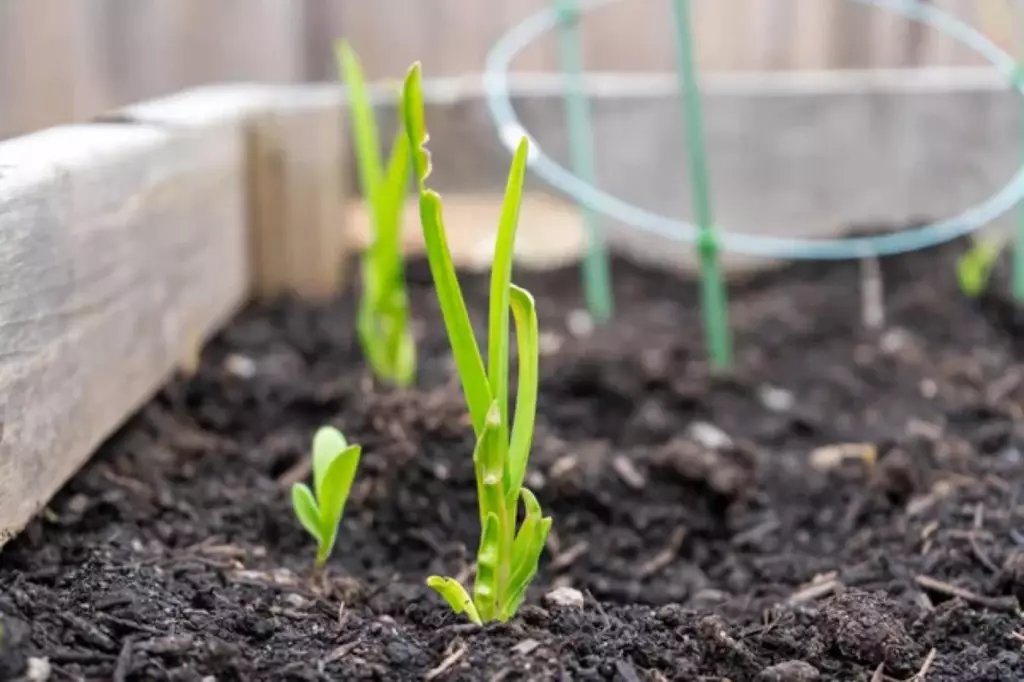
Here's what to look for in the soil:
- Loose and fertile: This helps the roots penetrate and expand easily.
- Free from rocks and clods: Ensures proper bulb development.
To prepare for planting, work the soil to a depth of about 8-12 inches and mix in some organic matter, like compost, to improve soil fertility and structure.
Spacing is crucial for your garlic's growth. Plant the cloves about 6 inches apart, and if you're planting multiple rows, maintain a distance of 12 inches between the rows.
Remember to choose your planting site based on these conditions:
- Sunlight: Full sun area
- Soil: Loose, fertile, and well-drained
- Depth: 8-12 inches of worked soil
- Spacing: 6 inches apart for cloves, 12 inches apart for rows
Best Place to Plant Garlic in Pots
When you're looking to grow garlic in pots, ideally, you want a spot that offers at least 6 hours of direct sunlight each day. Garlic loves the sun, and adequate sunlight is important for bulb development.
Light Requirements:
- Full sunlight: 6+ hours
Make sure the location is shielded from strong winds which can dry out the soil too quickly. The spot should also allow for good air circulation to prevent fungal diseases that thrive in stagnant, humid conditions.
Ideal spot characteristics:
- Protected from high winds
- Good airflow to reduce disease risk
Watering is important, but garlic doesn’t like to sit in wet soil, so ensure the pot has excellent drainage. Your pots should have drainage holes, and you can even elevate them slightly to improve water flow.
Drainage tips:
- Use pots with drainage holes
- Elevate for better drainage
- Avoid overwatering
Finally, consider the weight of your pots. Once filled with soil, they can be quite heavy, so choose a spot where you won't need to move them often.
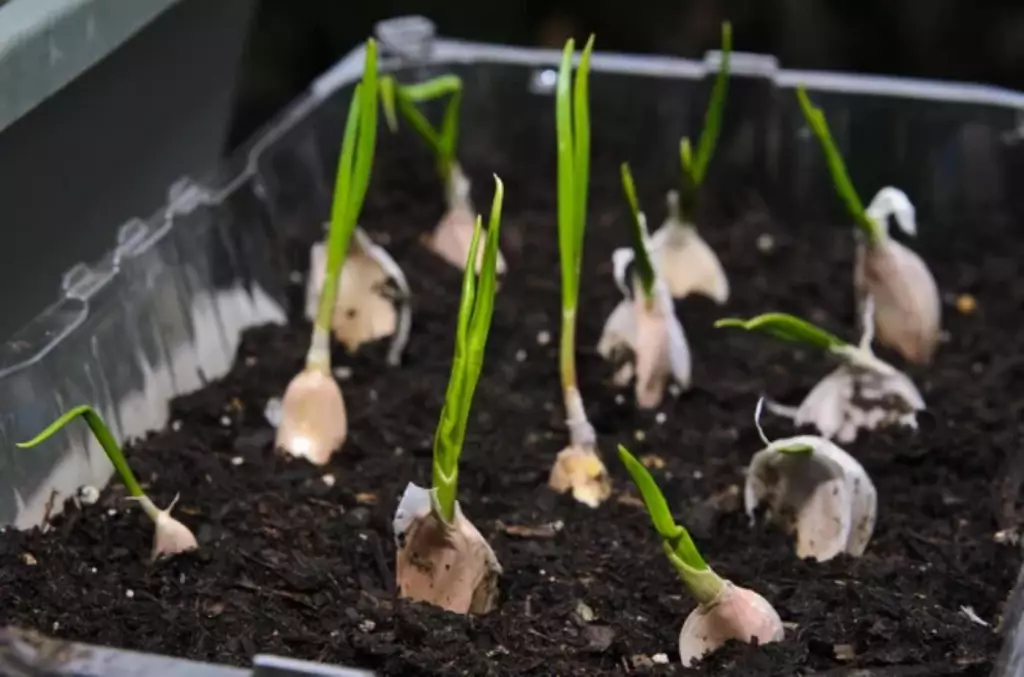
Considerations for potty placement:
- Weight of the potted soil
- Accessibility for care and harvesting
By finding a sunny, sheltered area with good drainage, you give your potted garlic the best chance for a successful growing season. Choose wisely, and with a bit of care, you'll be on your way to harvesting your own home-grown garlic.



